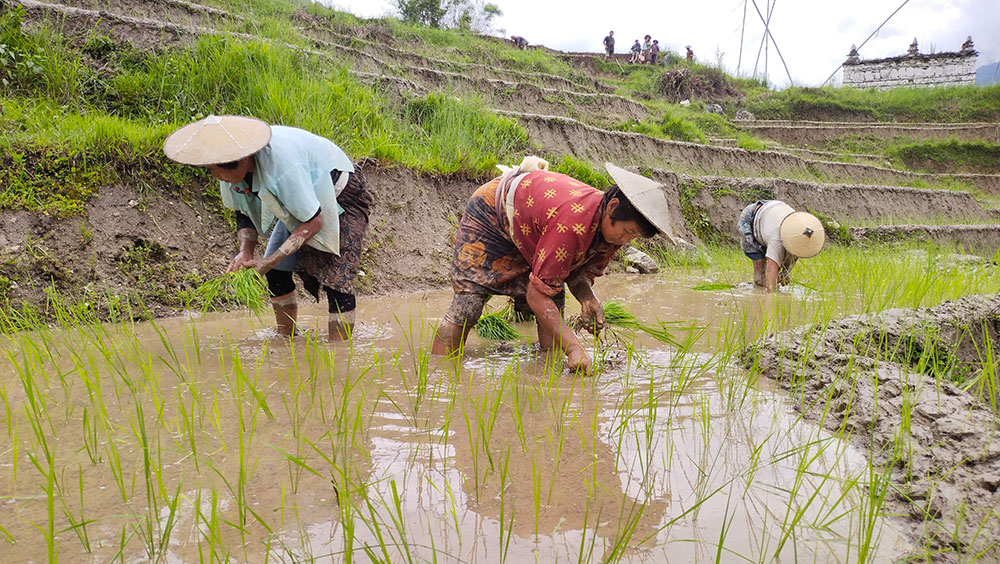Neten Dorji
Trashigang— Shin deep in mud, Yeshi Dema and her friends are busy transplanting paddy in their fields in Radhi. They are making the best of the monsoon that came late, but heavy.
The farmers are relieved and satisfied with the good amount of rainfall, as it has helped their paddy cultivation gain momentum. They were previously worried due to a shortage of irrigation water and a delayed monsoon, which affected their rice crop. However, a few days of rain allowed them to irrigate their fields, and they are now optimistic about a good harvest this year.
Yeshi Dema, a farmer, said: “The rain has proved to be a blessing upon us; it has helped us complete the cultivation on time.”

Timely rain helps paddy growers in Radhi
Many farmers in the region share her sentiment and expect a better yield compared with previous years. Norbu Wangdi, another farmer, mentioned that even the yield of other crops like maize might increase due to the sufficient water supply.
The farmers emphasised that Sorbang rice, a specialty of the area, requires a significant amount of water. Tashi, a farmer, said that without the rain in the past few days, they would have missed the opportunity to sow rice on over 30 percent of the targeted land in Pakaling.
On average, farmers harvest 37.32 kilograms of rice per acre of land. With a total cultivated rice area of 1,239 acres, it takes them 90 days to complete the transplantation process. Currently, Radhi is adorned with lush green paddy saplings and maize fields. With the transplantation work finished, the farmers can now take a well-deserved break.
Samten Wangchuk, a farmer, is satisfied with the timely rainfall and completion of all agricultural tasks, anticipating a good yield this year. Radhi gewog, with 875 acres of land dedicated to paddy cultivation, is known as the ‘Rice Bowl of the East.’
Despite challenges such as human-wildlife conflicts, a lack of proper irrigation canals, and a shortage of labourers, rice production in the gewog has been increasing. In 2021, the gewog produced approximately 2,490 metric tonnes (MT) of rice, which increased to 2,550 MT in 2022.
Pema Wangchen, the gewog agriculture extension supervisor, said that due to the absence of proper irrigation canals, farmers rely on the monsoon.
“They are fortunate this year.”
Rice cultivation serves as the primary source of income and is one of the important economic activities in Radhi.


